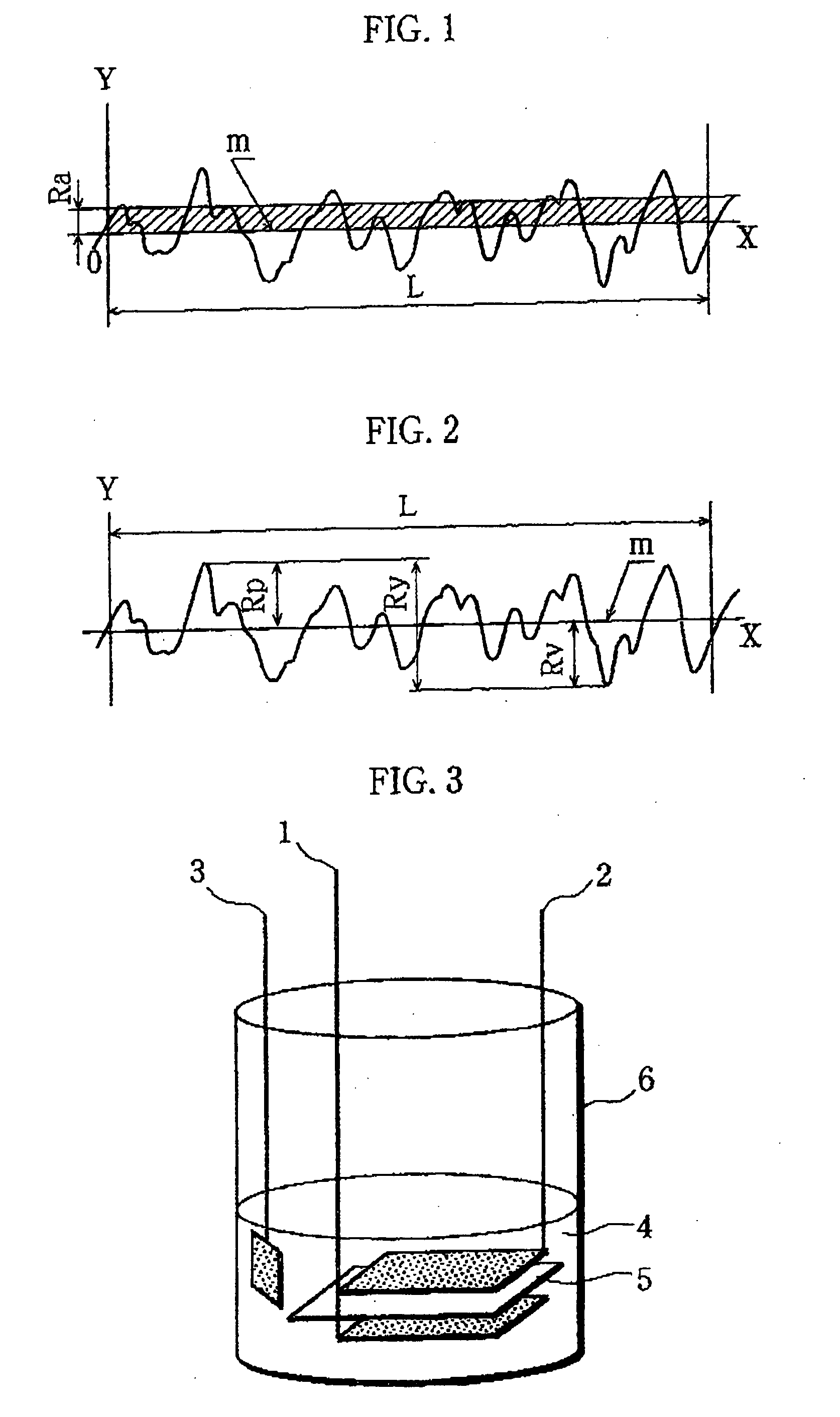Non-Aqueous Electrolyte Battery
a non-aqueous electrolyte, battery technology, applied in secondary cells, electrochemical generators, cell components, etc., can solve the problems of low battery voltage, insufficient charge-discharge capacity, and inability to discharge from the positive electrode current collector, etc., to achieve the effect of increasing the capacity of the battery, reducing the energy density, and dramatically increasing the electronic conductivity
- Summary
- Abstract
- Description
- Claims
- Application Information
AI Technical Summary
Benefits of technology
Problems solved by technology
Method used
Image
Examples
embodiments
First Embodiment
Comparative Example 1
[0076]A positive electrode and a test cell were prepared in the same manner as in Example except that the positive electrode current collector used was formed of an aluminum foil that was not subjected to a blasting process for roughening and had a surface roughness Ra of 0.026 μm (Ra=0.026 μm), a maximum height Rmax of 0.59 μm (Rmax=0.59 μm), and a thickness of 15 μm.
[0077]The positive electrode and the test cell thus prepared are hereinafter referred to as Comparative Positive Electrode x1 and Comparative Cell X1, respectively.
Comparative Example 2
[0078]A positive electrode and a test cell were prepared in the same manner in Example except that a positive electrode current collector formed of an aluminum foil subjected to a blasting process for roughening, with surface roughness Ra of 0.28 μm (Ra=0.28 em), the maximum height Rmax of 4.4 μm (Rmax=4.4 μm), and the thickness of 30 μm, was used.
[0079]The positive electrode and the test cell thus pr...
experiment 1
[0080]Using the foregoing Cell A of the invention and Comparative Cells X1 and X2, the discharge capacities per 1 g of the active material (mAh / g) were found at discharge current rates of 0.1 It, 0.2 It, 0.5 It, 1.0 It, and 2.0 It. The results are shown in Table 1. The charge-discharge conditions were as follows.
Charge-Discharge Conditions in the Case of a Discharge Current Rate was 0.1 It
—Charge Condition
[0081]The cells were charged at a charge current rate of 0.1 It until the cell voltage reached 4.5 V.
—Discharge Condition
[0082]The cells were discharged at a discharge current rate of 0.1 It until the cell voltage reached 2.0 V.
[0083]By charging and discharging the cells under the above-noted conditions, the discharge capacities per 1 g of the active material (mAh / g) in 0.1 It discharge were found from the discharge durations at the first cycle.
Charge-Discharge Conditions in the Case of a Discharge Current Rate of 0.2 It
[0084]After the foregoing charge-discharge operation with a di...
experiment 2
[0102]Based on the results of the foregoing Experiment 1, the volumetric capacity densities of Positive Electrode a of the invention and Comparative Positive Electrodes x1 and x2 were calculated according to Equation (3) below. The results are shown in Table 2.
Volumetric capacity density (mAh / ml)=Discharge capacity per 1 g of the positive electrode active material×(Mass of the positive electrode active material / Mass of the positive electrode mixture)×(Filling density of active material)×(Thickness of positive electrode active material-containing layer / Total thickness of positive electrode) Eq. (3)
[0103]Here, for example, in the 1.0 It discharge of Positive Electrode a of the invention, the discharge capacity per 1 g of the positive electrode active material was 124.7 (mAh / g); the mass of the positive electrode active material / the mass of the positive electrode active material-containing layer=90 / 100; the filling density of the active material was 2.2 g / mL; and the thickness of the ...
PUM
 Login to View More
Login to View More Abstract
Description
Claims
Application Information
 Login to View More
Login to View More - R&D
- Intellectual Property
- Life Sciences
- Materials
- Tech Scout
- Unparalleled Data Quality
- Higher Quality Content
- 60% Fewer Hallucinations
Browse by: Latest US Patents, China's latest patents, Technical Efficacy Thesaurus, Application Domain, Technology Topic, Popular Technical Reports.
© 2025 PatSnap. All rights reserved.Legal|Privacy policy|Modern Slavery Act Transparency Statement|Sitemap|About US| Contact US: help@patsnap.com



